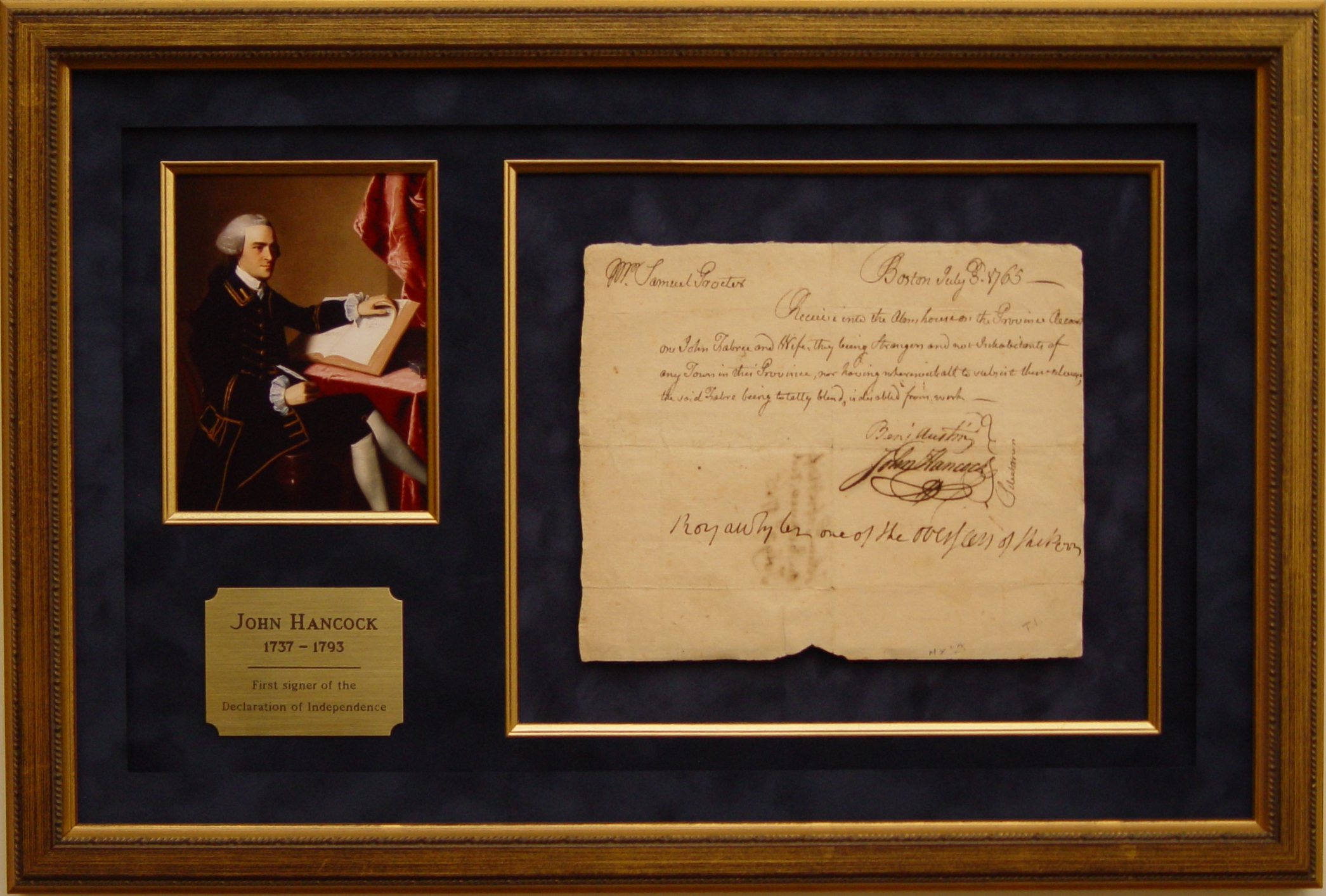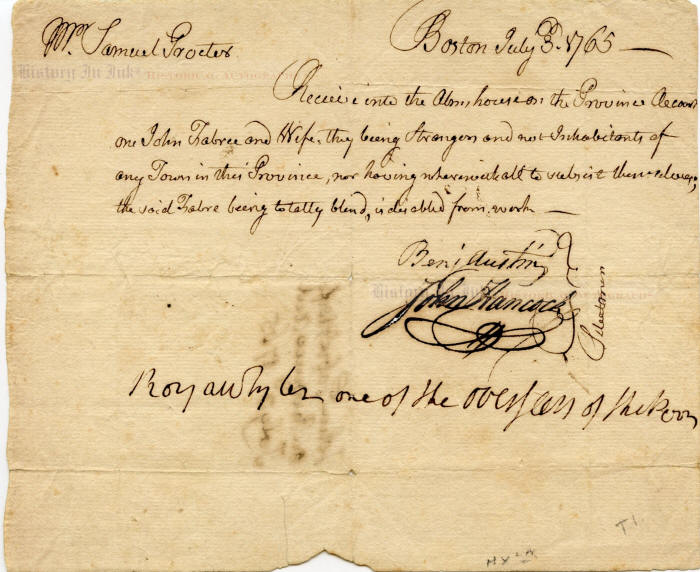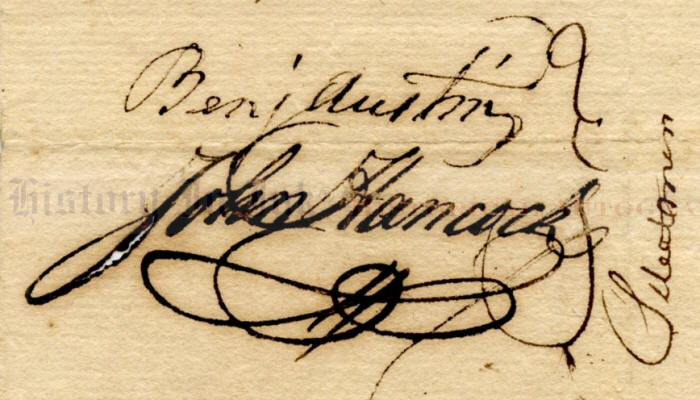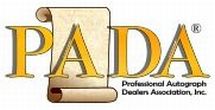


1431472
John Hancock
The 28-year-old Hancock orders the admission of a destitute couple to the alms house
John Hancock, 1737–1793. First signer of the American Declaration of Independence. Manuscript Document Signed, John Hancock, one page, 7½" x 6¼", Boston, [Massachusetts], July 3, 1765. Countersigned by Benjamin Austin; also signed by Royall Tyler, Sr.
Some four months after he emerged as one of Boston's political leaders, the 28-year-old Hancock, a member of the city's Board of Selectmen, signs this directive to accept a blind man and his wife into the alms house. The document reads: “Receive into the alms house on the Province Account one John Fabree and Wife, they being Strangers and not Inhabitants of any Town in this Province, nor having wherewithall [sic] to subsist themselves; the said Fabre [sic] being totally blind, is disabled from work."
Hancock, a graduate of Harvard, was Boston's wealthiest merchant. He inherited the city's leading mercantile firm from his uncle in 1764. As a trader, he opposed British trade regulations such as the Stamp Act, which imposed taxes on printed materials, and the Townshend Acts, which led to taxation on goods. The Stamp Act received royal assent on March 22, 1765, just over three months before Hancock signed this document, and took effect the following November. Hancock's opposition led him to smuggle goods such as glass, lead, paper and tea. In 1768 the British confiscated his ship, Liberty, and a riot ensued in Boston. Later the ship was burned. Hancock was hailed as a martyr and elected to the legislature, where he joined Samuel Adams in advocating resistance to England. Both Hancock and Adams were expressly omitted, by name, from the proclamation of general amnesty with which the British government sought to conciliate the colonies after the battle of Lexington and Concord in 1775. British General Thomas Gage issued a warrant for their arrest for treason, saying that their "offenses are of too flagitious a nature to admit of any other consideration but that of condign punishment."
On May 24, 1775, Hancock was elected the third President of the Continental Congress. He served some 2½ years, until October 30, 1777. During the first month of his term, he commissioned George Washington as commander-in-chief of the Army of the United Colonies. On July 4, 1776, the Congress declared American independence from England. As President of the Congress, Hancock was the first to sign the Declaration of Independence. He signed an extra-large signature at the center of the page. Referring to a bounty the British had put on the heads of revolutionaries, he said, "The British ministry can read that name without spectacles; let them double their reward."
During the Revolutionary War, Hancock served as senior major general of Massachusetts Militia.
Hancock was later elected the first Governor of the Commonwealth of Massachusetts. He served as Governor twice, 1780–1785 and 1787–1793. Between his terms as Governor, Hancock represented Massachusetts under the Articles of Confederation and was the seventh President of the United States in Congress assembled from November 23, 1785, to June 6, 1786. During his second term as Governor, he led Massachusetts toward ratification of the federal Constitution, which replaced the Articles of Confederation.
Hancock has boldly signed this document with his classic signature and bold paraph. The document is countersigned by Benjamin Austin, another member of the Boston Board of Selectmen, and Royall Tyler, Sr. (d. 1771), the father of playwright Royall Tyler (1757–1826).
The document has horizontal and vertical folds, with small holes at two fold intersections. There is a paper break in the tail of the “J" in "John" in Hancock's signature due to deterioration from the heavy brown ink with which Hancock has boldly signed the piece. The document is irregularly trimmed, and there are a ¾" vertical tear at the bottom edge and a ¼" fold split at the left edge, both affecting nothing. There are also old dealer pencil notations at the bottom blank margin. A note in another hand on the back, which identifies the document, bleeds through slightly but does not affect either the text or Hancockʼs signature. Overall this is an attractive piece, in very good condition.
The document is richly double matted in marine blue suede with a gilt inlaid wood fillet, a print of a contemporary portrait of Hancock by John Singleton Copley, and an engraved brass identification plate. It is framed in a gilt wood frame to an overall size of 20¼" x 13¾".
_____________
This item has been sold, but
click here to see other
American History items
that we are offering.



